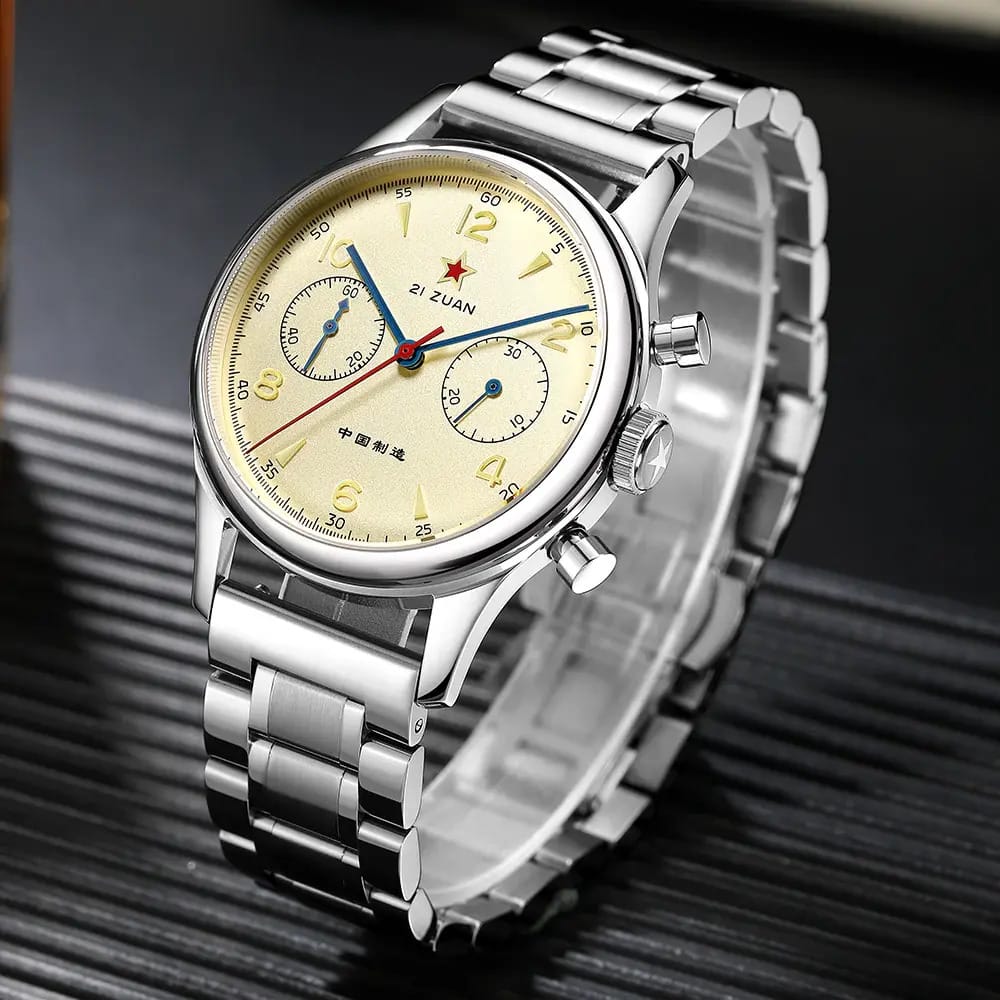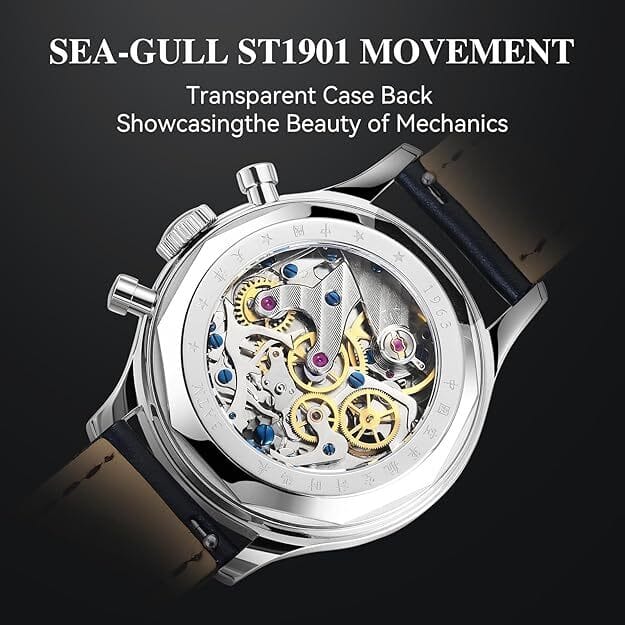- Wristory Weekly
- Posts
- Historic, Stylish and Cheap?
Historic, Stylish and Cheap?
Winding Back Time with the Seagull 1963
🕰️ Wristory Weekly – My Latest Watch Crush: The Seagull 1963
Lately, I’ve been a little obsessed with a watch that’s equal parts quirky, historical, and charmingly offbeat: the Seagull 1963. If you know, you know—but if you don’t, buckle up, because this timepiece has one of the most fascinating backstories in Wristory.

Dressed Her Up
The Chinese Chronograph with Cold War Origins
The Seagull 1963 wasn’t built for collectors—it was made for fighter pilots.
In the early 1960s, the Chinese Air Force commissioned a chronograph for their military aviators. The Tianjin Watch Factory (now known as Seagull) answered the call. The result was Project 304, a mechanical chronograph that could handle the rigors of flight.
Only 1,400 original pieces were made for the military. But decades later, Seagull revived the design, and what we have now is a faithful reissue of a Cold War-era military tool watch—with the kind of charm you just don’t get in modern timepieces under $300.
🔍 What Makes the Seagull 1963 So Special?

Shall i Say More?
Column Wheel Movement: That’s right—this thing uses a hand-wound column wheel chronograph, the ST19, based on a vintage Swiss Venus 175 design that China literally bought and moved piece-by-piece from Switzerland in the 1960s.
Acrylic Crystal: Most modern watches use sapphire. The Seagull sticks with acrylic, which scratches more easily but gives a warm, vintage look—and can be polished back to life in seconds.
Golden Case, Red Star: The 38mm case, blued hands, and that red star at 12 o’clock? Iconic. It’s like military function met vintage flair and fell in love.
Tactile Wind: If you’re into the ritual of winding a watch, the 1963 is satisfying in a way quartz watches can’t touch. It’s a reminder that you’re connected to the mechanics inside.
🤔 Is It a Gimmick or a Gem?
Some collectors write it off as a novelty. But honestly? For the price and the story, it’s a killer entry point into mechanical chronographs. It wears surprisingly well, keeps decent time, and it always gets a reaction from the watch enthusiast.
Plus, it’s got that Cold War intrigue—a reminder that horology is about more than just luxury brands and microbrand hype. Sometimes, it’s about aviation history, international engineering, and a little red star that quietly says, “I’m cooler than I look.”
🧠 Fun Facts to Drop at Your Next Watch Meetup
Seagull is the largest mechanical movement manufacturer in the world—many watches you’ve seen have their internals.
The ST19 movement has over 200 parts, all assembled by hand in Tianjin.
There are multiple versions floating around—38mm, 42mm, display backs, sterile dials—so collectors often chase variants.
Even though it’s hand-wound, it can run for over 45 hours on a full wind.
💬 Final Thoughts
So yeah, I’m in my Seagull 1963 era. It’s a watch with a soul—born in a very different time yet still ticking strong today. If you’re looking to mix history, style, and affordability in one quirky little package, give it a shot.
Let me know if you’ve tried one—or if you want a recommendation on where to find a good one that’s actually legit (because the fake market on these is wild).
Until next time, keep your crown screwed down and your watch wound tight.
— Wristory